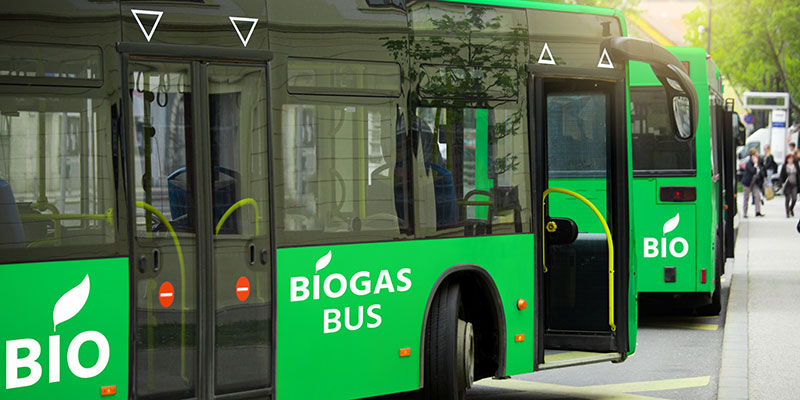Biogas derived from the treatment of wastewater can be purified and used to power vehicles.
Treating high-organic-load waste products with anaerobic digestion turns liabilities into assets
Waste-to-energy is gaining importance in the quest to create a circular economy, a sustainable one that minimizes waste by reusing and recycling materials as long as possible. It means generating energy from waste treatment, either by burning some materials, or in the form of anerobic digestion.
Anaerobic digestion is a process that offers environmental, economic, and social benefits by reducing emissions, using natural resources more efficiently, and creating employment opportunities. It transforms low-value waste materials into valuable resources that contribute to the circular economy.
Instead of being disposed of, organic waste is converted into methane-rich biogas — a sustainable source of clean energy — that can either be used on-site to power operations or sold for use off-site. The digestion process also produces a nutrient-rich solid that can be used as a soil enhancer.
Various types of solid waste, sludge, and wastewater can be used as feedstock in an anaerobic digester, including food waste, industrial and agricultural waste or wastewater, and municipal wastewater.
In anaerobic digestion, anaerobic bacteria break down organic waste in an oxygen-free environment. The anaerobic digester is first heated to a temperature that helps methane-producing microbes thrive. These microbes then begin feeding on the feedstock, producing methane. The methane-rich biogas produced during the digestion process rises to the top of the digester, where it is captured.
Adding Value With Biogas
Biogas can be used to power engines, produce heat, or generate electricity. This can be used on-site to reduce energy costs or even to become net zero in terms of energy use. Surplus energy can be sold, generating an additional income stream. The quality and value of the biogas can be improved by further processing to remove impurities such as water, carbon dioxide, and hydrogen sulfide. If processed further, it can be upgraded for use as compressed natural gas (CNG) or liquefied natural gas (LNG) to run vehicles.
The volume of the biosolids (digestate) remaining after anaerobic digestion is significantly less than that produced under conventional aerobic wastewater treatment. Because it’s odorless and pathogen-free but still rich in plant nutrients, it’s a valuable fertilizer and soil enhancer that can be sold to generate an additional source of revenue.
Digestate also can be used as livestock bedding or to make biodegradable plant holders. Recycling the digestate for alternative uses alleviates the need for disposing of biosolids produced during wastewater treatment, saving costs and helping compliance with environmental regulations.
Anaerobic digestion is particularly useful for treating wastewater with a high chemical oxygen demand (COD) that can be notoriously hard to treat. The solid, liquid, and gaseous products generated by the process all offer value and reduce our dependence on natural resources. It also drastically reduces greenhouse gas emissions and the volume of sludge that needs to be stored, treated, and disposed.
Fluence has developed a range of efficient and cost-effective waste-to-energy technologies for a broad range of industries. Our team of experts can assist with designing a stand-alone waste-to-energy system or upgrading an existing wastewater treatment system to incorporate an anaerobic digestion component that will convert your wastewater treatment plant.
Contact Fluence to learn more about our waste-to-energy solutions and find out how they can help treat challenging wastewater streams while providing a source of renewable energy and other valuable resources that will boost your organization’s environmental sustainability.

